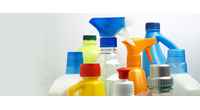
In most cases, it is possible to
- reduce overall use of chemicals
- switch to products that are less hazardous
Sometimes there is no alternative to using hazardous chemicals. In these situations it is important to know what preventative steps to take to minimise harmful exposure.
This page provides links to that provide information on using chemical-based products safely and responsibly.
Note that the EPA does not endorse in any way, or make any representations in relation to, any information, products or companies named or listed in the following websites or publications. You should make your own inquiries.


